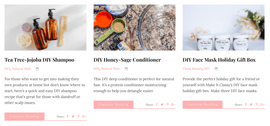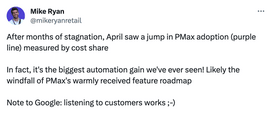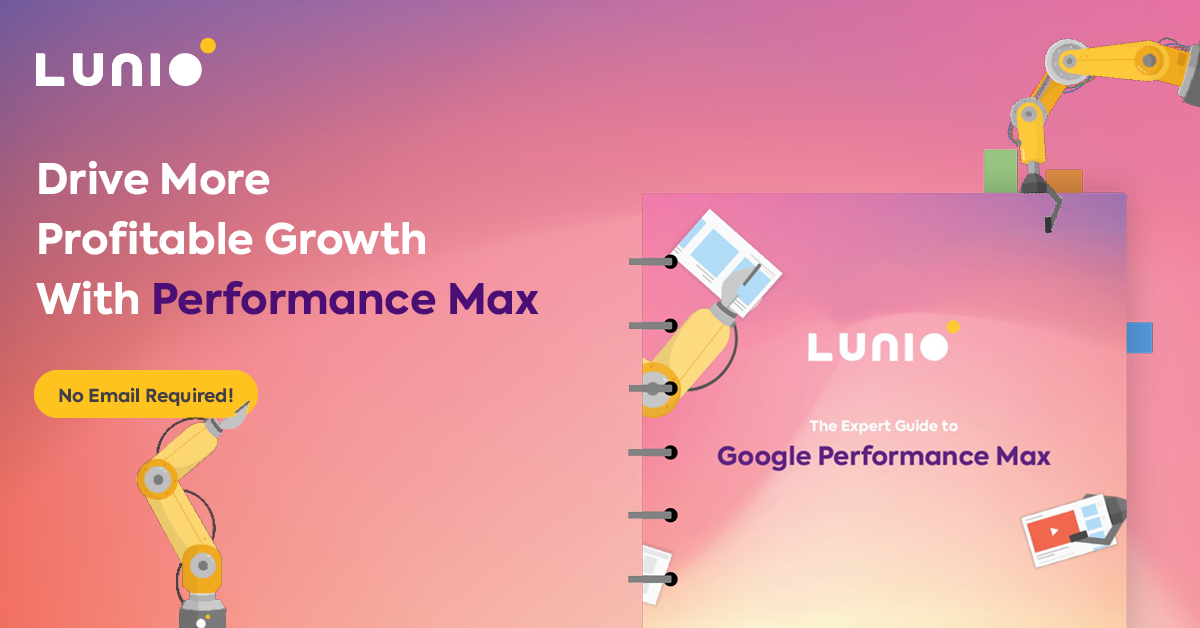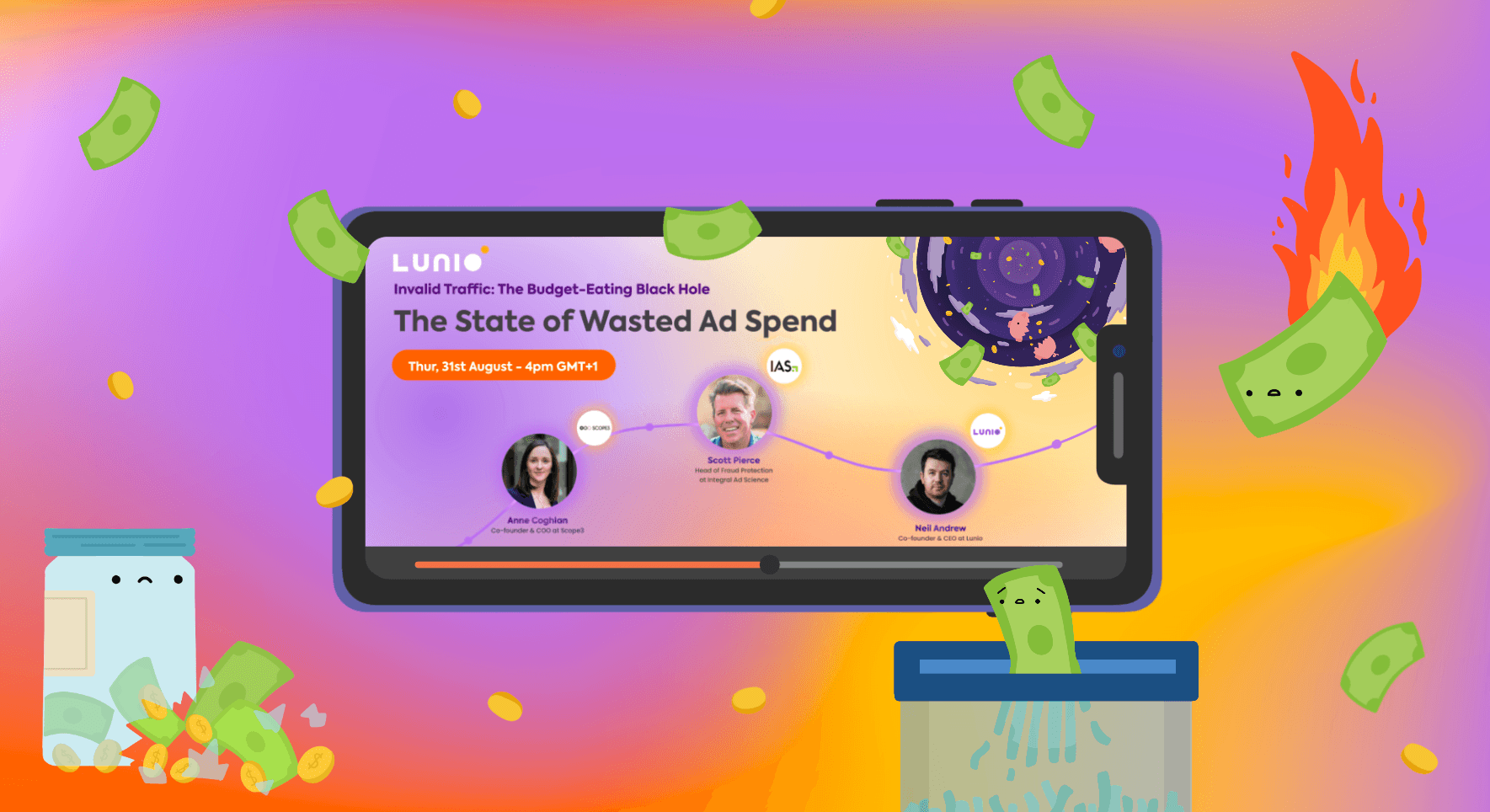The holiday season is the most important time of year for retailers. It’s peak spending time for shoppers, so many eCommerce businesses ramp up their ad spend to capitalise on the increased demand.
In 2022, UK advertisers spent an extra £1bn on Christmas ad campaigns. This year, US advertisers are expected to increase their Q4 ad spend by 5%.
As other advertisers spend more aggressively, the marketplace becomes more competitive. That means ad prices increase and there’s less margin for error. You don’t want to miss revenue opportunities due to low spend or misplaced budget.
In our 2022 webinar on how to create effective holiday PPC ads, Director of Paid Media at Marketwake Nicole Santana said:
Globally, we’re all impacted by some economic constraints going into peak season. But on the flip side, we’re still seeing projections of increased spend going into the holiday season, so it’s really important to make sure you’re prepping early, you have your promotional calendar set out ahead of time, and you’re using automation as your friend.
Early PPC planning can give you an advantage over your competitors. But if you haven’t started preparing your 2023 Black Friday marketing campaigns yet, it’s not too late.
In this article, we outline six challenges facing advertisers on the approach to Black Friday 2023, and how you can overcome these.
1. Shoppers Are Spending Less
Despite the 2022 trend noted by Nicole, a recent survey of European shoppers found that more than 90% are planning to reduce or change their spending habits in response to rising prices and interest rates. Shoppers are highly sensitive to pricing and discounts right now, so you can expect to see lots of interest in genuine Black Friday deals.
Think carefully about the offers you present. Shoppers are now more savvy about price inflation prior to Black Friday, thanks to media warnings that many Black Friday “deals” aren’t actually cheaper than any other time of year. So inflating your prices in the weeks leading up to Black Friday isn’t just unethical — it might not lead to extra sales, and could damage your brand if it’s exposed:
If you can’t compete on price, change your messaging instead. A 2023 report found that despite consumer cutbacks, shoppers are more likely to buy from brands who connect with them on an emotional level.
Shoppers want to see festivity, humour, nostalgia, and value-focused messaging in holiday season campaigns. So a compelling advertising strategy can help if you can’t reduce your prices to compete with other brands.
In addition, placing your ads on trustworthy sites can have an impact on conversions. 68% of consumers trust ads on editorial sites, versus 55% who trust social media ads.
Here are more tips from Google on creating Black Friday offers that stand out:
- Update your product photos — Use at least three quality images in shopping campaigns for a higher chance of clicks (offers with multiple images see a 32% increase in clicks).
- Add promotion details — Include any genuine discounts to your shopping campaigns to attract those looking for lower prices.
- Update product availability — Make sure your stock levels are accurate so shoppers aren’t left disappointed.
- Invite customers to shop in-store — Connect with last-minute shoppers by highlighting your local stores, especially if you offer click-and-collect options.
Eliminate Fake Traffic From Paid Campaigns
Ads are for humans, not bots. Get a demo and save up to 25% of your advertising budget by automatically eliminating fake ad engagements across all paid channels.
2. Customer Loyalty Is Waning
With so many competing sites offering similar products, it’s easy to see why customer loyalty is in decline. This long-term challenge allows competitors to draw customers away from you — but it also presents an opportunity for you to beat your competitors.
According to Google, 73% of shoppers would continue to buy from a company even if they raised their prices, as long as they felt valued as a customer.
Traditional loyalty programmes based on accumulating points no longer provide enough value to keep customers onside. Instead, you need a long-term strategy that creates valuable, positive experiences for your customers.
Building trust is one of the best ways to retain customers. Blog and eCommerce brand Classy Curlies provides its readers with tons of useful information for free, including DIY haircare instructions that don’t involve using any of their products.
This value-first content strategy helps customers build trust in the brand. So if or when they decide to buy hair products, they’ll shop with Classy Curlies first.
It takes time to build trust and loyalty, but you can tie this into your Black Friday marketing strategy. Consider offering valuable content for free as a Black Friday perk.
Other tried-and-tested customer retention strategies include:
- Personalising your messaging and offer — Make your customers feel special with offers that are unique to them and their community.
- Sharing your values — Help people connect with your brand on a deeper level by sharing your mission, vision, and values.
- Providing excellent customer service — Keep customers coming back by providing a great experience, including fast responses and fair shopping policies.
- Making sales easy — Break down barriers to conversion with rapid site speeds and seamless purchasing experiences.
- Creating a community — Social proof is a great way to build your brand, so connect your customers across your social media channels.
- Delighting your customers — Delight your customers without relying on gimmicky email or social campaigns. Birthday freebies and “just because” offers can boost sales and customer loyalty.
3. Automated Campaign Types Are the New Norm
2023 is the year of PPC automation. Platforms like Google’s Performance Max and Facebook’s Advantage Plus have been around for a while, but they’re now being embraced by more and more advertisers.
One agency saw client Performance Max spend jump to almost the same level of spend on standard and (the now deprecated) smart shopping campaigns in January 2023:
But you need to learn how to get the most out of automated campaigns to get the best possible results. In our Performance Max webinar, Google Ads Expert and Co-Founder of PPC Mastery Miles McNair explains:
Even though Performance Max may seem super simplified, I think it’s actually becoming a lot harder to get the results that you want. Because there’s a lot of thinking that goes into the campaign before you actually set it up.
Automated campaigns give you less control over ad spend and audience targeting. There are fewer reporting insights available, so you have less data on which to base new campaigns.
Learning how to use Performance Max and other automated campaign types effectively is essential for maximising conversions from your peak shopping season ad budget, especially if you’re planning to ramp up your ad spend.
Learn all about using Performance Max in our profitable Performance Max strategies webinar and expert Performance Max guide.
4. Scaling Personalisation Effectively
94% of customers say a great customer experience makes them more likely to buy from a brand again. So personalising the experience for each customer is a great way to engage with Black Friday shoppers in your marketing campaigns.
AI is a gamechanger for personalisation on a large scale. As more companies embrace AI in their marketing campaigns, buyers no longer expect a one-size-fits-all offer. To get the best from your campaigns, you’ll need AI to personalise the experience for each customer.
For Black Friday 2023, AI can help you:
- Recommend relevant products based on previous purchases or abandoned shopping carts.
- Write ad copy that sells with compelling ways to present your value proposition.
- Create and issue highly targeted campaigns to relevant audiences quickly and efficiently.
- Reach audiences in multiple languages.
- Test your ads quickly so you can optimise for maximum conversions.
5. Embracing Omnichannel
Omnichannel marketing is one of the most effective ways to get more buyers on board. Estimates show that customers now reach up to 50 touchpoints before they buy, with the amount depending on the industry, product cost, and several other factors.
Using multiple marketing channels makes it more likely that customers will engage with your brand and buy from you, especially at highly competitive times like Black Friday. Research suggests omnichannel campaigns can almost quadruple your order rate:
But successful omnichannel marketing isn’t just about expanding your reach. Jessica Bonacci, Multimedia Consultant at WebFX, explains:
Omnichannel marketing means that your business creates a seamless brand experience across the different marketing channels your customers use. The complexity comes in when you try to meet people at different stages of their journeys, in multiple locations online, with tailored messaging for each marketing channel.
Use these tips from Google to upgrade your omnichannel marketing experience:
- Set up enhanced conversions on Google Ads — Tracking digital touchpoints can help you make sense of your customers’ journeys. See conversion tracking best practices to learn more.
- Help online customers find your physical store — Update your Google Business profile to make sure customers can find you on Google Maps.
- Make use of local inventory ads — Show customers how much stock you have online. If possible, allow them to buy online and collect in-store.
A/B testing will also help you get the best from omnichannel marketing. Test your ads on each channel regularly to prevent ad fatigue and optimise ads for your target audience.
6. Invalid Traffic & Fake Ad Engagements
As advertisers spend more and the ad marketplace becomes more competitive, there’s an influx of invalid activity during the holiday season. Scalper and price scraping bots are rife, leaving customers disappointed and giving competitors information about your strategy.
Our Meta Retail Peak Season Report 2023 found invalid traffic on Facebook and Instagram jumped from 17.5% to 25% during peak shopping season 2022. That means more than $8bn of ad spend was wasted on Meta in Q4 alone — and in 2023, it’s expected to rise to $9bn. This equates to around $54bn in wasted revenue opportunities.
Bots and other invalid users click your ads without offering you any return on your ad spend. Ramping up your ad spend around Black Friday can make you more vulnerable to click fraud — but you shouldn’t need to limit your spend to prevent lost revenue.
Invalid activity affects all ad platforms all year round. According to our 2024 Wasted Ad Spend Report:
- 5.5% of Google Ads traffic and 17.5% of non-Google advertising traffic was invalid.
- The retail sector has the second highest rate of invalid traffic (19.02%) after the insurance industry (21.55%).
- More than $71bn in ad spend is expected to be lost to invalid traffic in 2024 — a 22% increase compared to 2022.
“The retail industry experiences a high invalid traffic rate. Bots mimic genuine interest in products to skew vanity metrics, engage in ad fraud and manipulate inventory through bulk fake checkouts.”
Implementing a invalid traffic solution like Lunio can protect your platforms during peak shopping times — and all year round. As well as preventing wasted ad spend, it minimises lost revenue opportunities during peak shopping season, so you can make more sales and boost your Q4 revenue. Retailers like New Balance, M&S, and Moonpig have all saved thousands thanks to Lunio.
Eliminate Fake Traffic From Paid Campaigns
Ads are for humans, not bots. Get a demo and save up to 25% of your advertising budget by automatically eliminating fake ad engagements across all paid channels.














